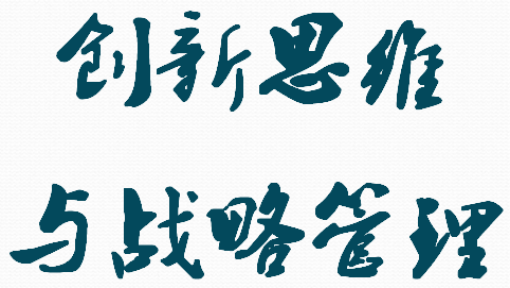
当前课程知识点:数字集成电路分析与设计 > The Wire > 3. Resistance > Video
Next we move to resistance
This is the model of the wire resistance
And we know this is the length of the wire.
This is the direction of the current
And this is the thickness of the wire.
This is the width of the wire
So according to the resistance,
how to calculate resistance, that one equals
The ρover H times the length over width. Right?
And you know this the length, the width, the thickness,
theρhere stands for resistivity of commonly used conductors
For example the silver, the copper, the gold,
the aluminum and tungsten
And normally we use the copper and aluminum as the wires.
So you can see the resistivity of the copper and aluminum.
This is, this one is much bigger than that of this one
And according to this expression you can find out
Because the p over H times L over W. So this one
For example this is width, this is length.
This one if we scale this one,
scale the width and length by the same factor
Therefore this one has the same resistance as this one
Right? Because the length over width of
this one is equal to the length over width of this one. Right?
Therefore because normally the resistivity of
the conductor is constant and also the thickness
of the wire in the same process is constant
Therefore, we can define the ρ over H as this one.
This is called R square
R square, unit is Ω per square.
Therefore the resistance of
wire equals R square times L over W
Right? So with this one
we can calculate the resistance of the wire
And here I just mentioned that the copper has a resistance
which is the substantially lower than that of the aluminum
However the copper has
The disadvantage that it is very easy for copper to diffuse into the silicon
So that's a big issue.
So how could we solve that?
As for as I know,
in about twenty years ago, about 1998, the IBM company
Invented a process called dual damascene process.
The dual damascene process is that coating the copper
with a buffer material called Titanium nitride,
Titanium nitride
And the etch or trench,
I mean the etch or trench in the insulator.
Then fill the copper,
I mean coated by the buffer material Titanium nitride into the trench
OK? And that will prevent the diffusion of the copper into the silicon
Therefore the coexistence of the device will not degrade
So this is in contrast with the traditional process
The traditional process is that it deposit the metal onto insulator
Then etch, remove, remove the redundant one by etching.
So this is different from that one.
This is called IBM dual damascene process
OK?After that the copper is widely
used to interconnect different components
This is the sheet resistance of different material
For example this one,
the n-well region p-well region, n-plus,
p-plus region and this one n-plus p-plus polysilicon
And aluminum,
so you can see the aluminum is,
the R square is much much smaller than that of the others
And also how could we reduce the resistance of the polysilicon?
So we normally use the approach called silicide.
So silicide is a compound material formed
using silicon and a refractory metal.
This creates a highly conductive material
that can withstand high-temperature process steps without melting
so you can see here is a silicide.
this is polysilicon.
this is SiO2.
So by using this one we can heavily reduce
their resistance of the ploysilicon
So conductivity of this one is 8 to 10 times better than polysilicon
This foil tells us, you can find out
when the n-plus p-plus diffusion is with the silicide
you can see the resistance R square is much smaller
than that of this one.
The same is true here that this one,
The polysilicon with silicide
is much smaller than that of this one.
How could we deal with resistance?
We can use selective technology scaling.
You can scale down the width and length of the wire
and keep the thickness of the wire constant
And we can use more interconnect layers,
reduce average wire-length
And we can use better interconnect
materials such as copper and silicides.
-1
--文档
-1.Introduction to Digital IC
--Video
-2.Architecture of Digital Processor
--Video
-3.Full Custom Design Methodology
--Video
-4.Semicustom Design Methodology
--Video
-5.Quality Metric of Digital IC
--Video
-6.Summary and Textbook Reference
--Video
-7.HW--作业
-7.PPT
--补充材料1
--补充材料2
-Key Points Review of Last Lecture
--Video
-1.Introduction
--Video
-2.The Diode
--Video
-3.The MOSFET Transistor
--Video
-4.Secondary Effects
--Video
-5.Summary and Textbook Reference
--Video
-6.HW--作业
-6.PPT
--补充材料
-Key Points Review of Last Lecture
--Video
-1.Introduction
--Video
-2.Static Behavior
--Video
-3.HW--作业
-3.PPT
--补充材料
-Key Points Review of Last Lecture
--Video
-1.Dynamic Behavior I
--Video
-2.Dynamic Behavior II
--Video
-3.Power Dissipation
--Video
-4. Summary and Textbook Reference
--Video
-5.HW--作业
-5.PPT
--补充材料
-1.Introduction
--Video
-2.Static CMOS Design I
--Video
-3.Static CMOS Design II
--Video
-4.HW--作业
-4.PPT
--补充材料
-Key Points Review of Last Lecture
--Video
-1.Static CMOS Design III
--Video
-2.Static CMOS Design IV
--Video
-3.Dynamic CMOS Design
--Video
-4.Summary
--Video
-5.HW--作业
-5.PPT
--补充材料
-1.Introduction I
--Video
-2.Introduction II
--Video
-3. Static Latches and Registers I
--Video
-4.Static Latches and Registers II
--Video
-5.Static Latches and Registers III
--Video
-6.HW--作业
-6.PPT
--补充材料
-1.Key Points Review
--Video
-2.Dynamic Latches and Registers I
--Video
-3.Dynamic Latches and Registers II
--Video
-4.Dynamic Latches and Registers III
--Video
-5.Pulse Register
--Video
-6.Pipelining
--Video
-7.Schmitt Trigger
--Video
-8.Summary and Textbook Reference
--Video
-9.HW--作业
-9.PPT
--补充材料
-1. Introduction
--Video
-2. Adder: Full Adder (Definition)
--Video
-3. Adder: Circuit Design
--Video
-4. Adder: Logic Design I
--Video
-5. Adder: Logic Design II
--Video
-6. Adder: Summary
--Video
-7.HW--作业
-7.PPT
--补充材料
-1. Key Points Review
--Video
-2. Multiplier
--Video
-3. Shifter
--Video
-4. Summary and Textbook Reference
--Video
-5. HW--作业
-5. PPT
--补充材料
-1. Introduction
--Video
-2. Capacitance
--Video
-3. Resistance
--Video
-4. Electrical Wire Models
--Video
-5. Summary and Textbook Reference
--Video
-6. HW--作业
-6. PPT
--补充材料
-1. Introduction
--Video
-2. Capacitive Parasitics
--Video
-3. Capacitive Parasitics II
--Video
-4. Resistive Parasitics
--Video
-5. Summary and Textbook Reference
--Video
-6. HW--作业
-6. PPT
--补充材料
-1. Assignment Solving
--Video
-2. The teaching assistants want to say
--Video
-1. Problem 1
--Video
-2. Problem 2
--Video
-3. Problem 3
--Video
-4. Problem 4
--Video
-5. Problem 5
--Video
-6. Problem 6
--Video
-7. Problem 7
--Video
-1. Problem 8
--Video
-2. Problem 9
--Video
-3. Problem 10
--Video
-4. Problem 11
--Video
-5. Problem 12
--Video
-6. Problem 13
--Video
-7. Problem 14
--Video


